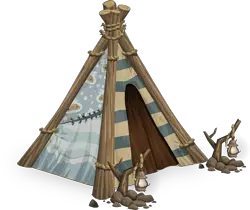Native American Homes
There were many Native American tribes through North America. The homes they built were as varied as they were. Their homes often reflected the region in which they lived, their climate, and the nature of their life. Three of the most recognized Native American homes were the teepee, the longhouse, and the pueblo.


The teepee is the Native American home that you’ve probably seen in movies. It is probably the most famous of all Native American homes. The word comes from the Lakota word “thipi,” which means “dwelling.” These were most common on the Great Plains of the central United States. They were tent-shaped and were usually covered with buffalo skins. Teepees were useful for tribes were moved a lot because they could easily be taken apart. They were usually about twelve feet tall. Later, however, as the Plains Indians became horsemen, they built them twice as tall. They were meant to be portable, and could be taken apart very quickly.

Teepees were simple, but cleverly designed. The opening at the top of the teepee had a flap. When fires were burned inside the teepee, the flap could be opened to let smoke escape. Think of it—it was almost like a chimney!

Longhouses were most common in the Northeastern United States. They were usually used by the Iroquois tribes. As their name suggests, they were long—they could be 200 feet long and twenty feet wide. They were usually built with a long, central hallway with a row of compartments down either side. Individual families lived in the compartments. Longhouses also had a common room at one end which could be used by everyone in the house. Believe it or not, as many as sixty people could live in one longhouse!

Longhouses took a long time to build. Therefore, they were most often used by tribes who tended to stay in one place for long periods.
In the southwestern United States, the Pueblo Indians made homes known as pueblos. They made a clay of water, earth, and straw, and then formed bricks. These bricks were dried in the sun and used to make flat, rectangular homes.
These homes looked something like very large shoeboxes. For the sake of protection, pueblo homes usually did not have doors or windows on the outside. Instead, the home was entered by climbing a ladder and entering through an opening in the roof. The opening on the roof was the only opening a home might have. Pueblo homes could be more than one storey, sometimes with additions made over time.

Things to Remember:
- Teepees were very portable and were good for tribes who moved a lot.
- Longhouses could house as many as sixty people.
- Pueblo homes were built for defense, and had to be entered through the roof.



